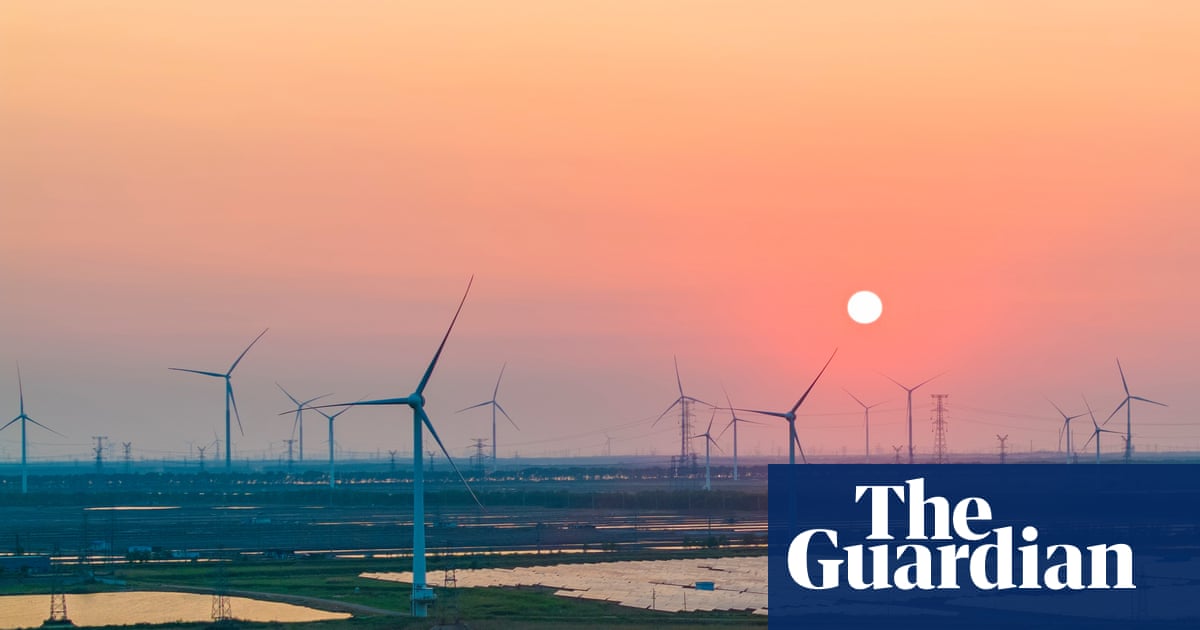Anything China does on energy and climate change is very big news. Its plans ripple around the world, whether that’s in changing the demand for fossil fuels or affecting the impacts on the planet from global heating.
On Thursday, Australia woke to the news that China’s president, Xi Jinping, had told the United Nations that for the first time his country was setting a target to cut – in absolute terms – its greenhouse gas emissions.
In a video address, Xi said China’s emissions would fall by 7% to 10% from their peak. When that peak happens he didn’t say, but some analysts think it may have already passed.
Anthony Albanese had a lukewarm response to Xi’s announcement, saying it was “good that there is progress being made”, but “of course [Australia] would like there to be more”.
China’s emissions are about 29% of the global total – more than twice that of the United States, the world’s second biggest emitter.
“If we see emissions peak and fall in China, then we will see them fall everywhere,” says Dr Wesley Morgan, a Climate Council councillor and researcher at the institute for climate risk and response at the University of New South Wales.
Whatever China does will make a substantial difference to the impacts of the climate crisis felt around the world, including Australia.
What’s at stake for Australia was clearly articulated by the release last week of Australia’s first national climate risk assessment, which laid out the shocking toll on the economy, on communities and on habitats and wildlife as global temperatures rise.
Political figures and commentators who want to see Australia slow down on cutting emissions have pointed to China’s lack of a target as justification for their position. Those arguments will be harder to make now.
While China’s new target is not in line with limiting global heating to 1.5C, Morgan says, nor are most other national 2035 targets that have been announced – including Australia’s.
Underpromising and overdelivering
Many climate analysts have expressed disappointment at what was seen as the timid nature of China’s target, but many also noted China had underpromised and overdelivered on its previous target.
Dr Jorrit Gosens, an expert on China’s energy transition at the Australian National University, says: “The 7% to 10% reduction by 2035 is disappointing, because it is less than what we need. But 7% to 10% in political terms is quite an achievement.”
China is also the biggest manufacturer and deployer of technologies to slow global heating, from wind turbines and solar panels to electric vehicles and batteries.
Xi also set other 2035 goals: solar and wind capacity would increase by six times the levels in 2020 to reach 3,600 gigawatts, and the share of non-fossil fuels providing the country’s energy would rise above 30%.
But Gosens says both these targets will be easily reached. China has been adding between 300GW and 400GW of solar and wind a year for the past two years.
Getting to a total of 3,600GW by 2035 would require a rate of only about 180GW a year, he says.
“It is so entirely likely that it will be overachieved that it’s almost pointless to set that target,” he says.
after newsletter promotion
The low target is likely aimed at international audiences, Gosens says. “China wants to avoid criticism for missing a target and instead get lauded for overachieving.”
Slowing demand for Australian fossil fuels
Any ambition from China to reduce its fossil fuel use is going to be keenly watched by the fossil fuel industry. The country is the world’s biggest importer of both steel-making coal and coal for burning in power stations and is a significant importer of LNG.
“Declining fossil gas demand from China will also impact China’s LNG demand. And China is Australia’s largest LNG customer,” says Josh Runciman, Australian gas analyst at the Institute for Energy Economics and Financial Analysis.
He says: “China’s domestic gas is its cheapest and LNG will likely be the first supply source that falls away. We’re likely to see a similar trend for Australian coal.”
While China continues to build coal-fired power plants, Gosens said in the first half of 2025 there had been a cut in coal power consumption of about 100 terrawatt hours.
For context, that reduction is roughly the equivalent of turning off all the coal plants in Australia’s national electricity market for 11 months.
Gosens says China has installed about three-quarters of all the solar and wind power on the planet.
“That means China is doing three times more [renewable energy installations] than the rest of the world put together.”
Bill Hare, the founder of research organisation Climate Analytics, says China will be able to meet its new target with policies that are already in place, “so it won’t drive down emissions”.
“Australia is a major exporter of fossil fuels to China,” he says. “About 34% to 35% of LNG exports go to China and about 11% to 12% of our coal exports. So Australia is fuelling China’s ongoing overreliance on fossil fuels.
“Australian government policy visibly favours ongoing exports of these fossil fuels to China, whereas it could be doing a lot more to facilitate China’s rapid exit from these fuels – and that is in all of our interests.”

